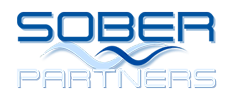Heroin Addiction Treatment

Heroin Addiction, What Is It?
Diacetylmorphine, commonly known as heroin, was initially synthesized in 1874. Not until 1897 did Felix Hoffman of the Bayer Pharmaceutical Company rediscover the substance while attempting to produce codeine out of morphine. Bayer used the name “Heroin” to convey the heroic feat that heroin can achieve by treating pain without the addictive consequences of morphine use. Heroin addiction side effects turned out to be the exact opposite of what was claimed, with heroin swiftly metabolizing into morphine.
Morphine is a synthesized version of opium derived from the poppy plant, and heroin is a semi synthesized form of morphine. Classified as a Schedule I Narcotic by the Food and Drug Administration (FDA), heroin use is not allowed under any circumstance and has no recognized medical purpose.
Producing an initial euphoric high, followed by intense relaxation, heroin is designated as a downer drug and can be smoked, inhaled, or injected. Some users have reported addiction after one single-use, attesting to heroin’s powerful potential for addictive devastation.
Heroin in its purest form is white, with a bitter taste, and when mixed with other substances, can turn into a brownish color. A third version is black tar heroin, a sticky black substance that is diluted and usually injected.
Short & Long-term Side Effects of Heroin Use
Heroin can never be understated, as they can completely change the behavioral pattern of users. The only remaining goal in their lives is how to obtain the next fix, with $300 to $500 a day habits common occurrences. In their minds, people become separated into two groups, the ones who share their company during use, and the ones who do not. Family, friends or jobs become a cloudy distant past as heroin users try to avoid the cruel consequences of withdrawal at all costs.
Dangerous and illegal behavior starts to become the norm rather than the exception and the initial stealing from home can easily spill into society in general. Normal brain functions are thoroughly modified after prolonged use of this immediately addictive drug as users do not even become aware that they are now addicts of the worst form. The horrible thing about heroin addiction and abuse is that the “high” only lasts for 3-4 hours, and then the cycle starts anew.
Common Short-Term Heroin Side Effects:
- Dry mouth
- Constipation
- Nausea
- Heavy limbs
- Pain suppression
- Alternating states of alertness and drowsiness
- Narrowed pupils
Common Long-Term Heroin Side Effects:
- Collapsed veins
- Respiratory afflictions
- Spontaneous abortion
- Hallucinations, mood swings or mental instability
- Bacteria and heart valve infections
- HIV/AIDS, hepatitis B or C infections due to sharing of drug paraphernalia
- Malnutrition
- Abscesses
- Pulmonary disease
Heroin Withdrawal
Withdrawal symptoms of heroin use are excruciating and can manifest themselves just within a few hours of heroin use, albeit not life-threatening. These intense feelings of discomfort are to be absolutely avoided by heroin abusers.
Since the concentration of heroin is thoroughly unknown to users, overdosing is an enormous risk at every instance of use, but sadly also completely ignored. The frightening addictive potential of heroin is further evidenced by babies born from heroin using mothers who are already addicted to the drug and do not get a chance to lead a normal life.
Of all the side effects, addiction is by far the most heart-wrenching and cannot be cured without professional help. Eventually, the addiction leads too in all likelihood incarceration, mental institutions, or worse, death. The only avenue of escape is a medical intervention and total abandonment of the drug.

Empower yourself to start a life free from heroin addiction. Our team is here to help you every step of the way.
Find the strength to overcome addiction with the support of our experienced professionals. Reach out today to begin your recovery journey.

Withdrawal Symptoms
Heroin withdrawal symptoms are considered to have the fastest onset of symptoms. Of course it matters how much heroin a person is taking and how long they’ve been taking it but on average opioids with shorter half-lives like heroin have shorter lasting withdrawal symptoms.
The fear of experiencing pain during the heroin withdrawal process keeps many heroin users stuck in their addiction. Today is a new era in heroin detox and withdrawal. Heroin users can overcome their addiction quickly and easily.
Addicts since 2013 have traveled to our Orange County rehab in Huntington Beach, California to participate in our virtually painless heroin detoxification program. Suboxone Detox gives qualified clients every opportunity for success.
Heroin Detox
Most heroin users develop addiction in one of two ways:
- Heroin addiction begins as a result of an escalation of substance use over many years that begin during childhood usually starting with cigarettes, marijuana or alcohol. The exact formula that creates addiction in people is quite complex but generally can be linked to lifestyle choices that began in early adolescence.
- As part of a pain management treatment program directed by a physician that escalates over a period of years from simple opioid dependence to psychological opioid dependence. As soon as the change from physical to psychological dependence happens an opiate user seeks out more powerful opiates. Heroin is considered to have the greatest euphoric effects because of its ability to cross the blood brain barrier faster than any other opiate. Therefore it is the opiate of choice for most opiate addicts.
Suboxone Detox
Heroin Suboxone Detox helps heroin addicts recover without experiencing opiate withdrawal symptoms. Each client receives an individualized treatment program designed to treat their specific withdrawal symptoms.
Opiate Suboxone detoxification works extremely well for daily heroin users. Our heroin detox program directs resources into several key areas to provide heroin users with the best detox program available.
- Insomnia is the single greatest reason why heroin users fail in detox. Our sleep disorder treatment makes the insomnia problem disappear. Heroin withdrawal induced insomnia requires intensive sleep disorder treatments during the first few days in heroin detox. Once our client develops healthy sleep patterns the sleep disorder treatments are methodically tapered to create more natural sleep patterns.
- Diarrhea is probably the single most dangerous opiate withdrawal symptom because it causes dehydration. Diarrhea has the potential of – delaying recovery, compromising immune systems and exaggerating other opiate withdrawal symptoms. Suboxone Detox eliminates opiate withdrawal initiated diarrhea in less than 24 hours after admission. The likelihood of a speedy recovery is improved dramatically when this one withdrawal symptom is treated properly.
